![]()
Burma is a culture-rich country nestled between India, China, Bangladesh, Laos and Thailand. Their cuisine is as rich as their culture and I have had the pleasure of enjoying some staples and delicacies during my growing years, mainly because my grandmother is Burmese. The key components of Burmese cuisine have been greatly influenced by the neighbouring country’s eating habits, the most notable being India, China and Thailand.
That being said, Burmese cuisine is notably different from any others you might have come across, be it the sublime taste or the rich colourful presentation. A single bite can be hot and sweet, salty and sour, crunchy and chewy, all at the same time.
The fact that my grandmother is Burmese doesn’t make me an authority on Burmese cuisine; it does, however, give me a fair idea as to what authentic Burmese cuisine tastes like. I was recently invited to sample some food at Mong Chow, a fairly recent entrant, featuring a relatively obscure (albeit delicious) cuisine, on the Karachi food scene.
The food
Since Mong Chow is set to open at Ocean Towers in Karachi later this year, the owner, Mrs Fauzia Maung Khuhro, decided to open the restaurant as a ‘delivery/takeaway’ out of her own kitchen. Her daughter, Ayela Khuhro, is helping her set everything up.
The mother-daughter duo invited me to their home last week for some Mong Chow and I was over the moon, as I hadn’t had any good Burmese food in a long time. As I stepped into the house, I was greeted by Ayela and her dog, which left me a little apprehensive, for obvious reasons. After a brief round of introductions, Ayela led me to a bright reading room of sorts with bookshelves containing priceless tomes by literary giants including Dumas, Wordsworth and Burton. The room greatly lifted my spirits and I was hoping the food would too.
We started off with a ‘Burmese Green Papaya Salad’ featuring shredded raw papaya garnished with some deep fried onions and garlic, with a dash of finely chopped coriander. I was a bit hesitant to taste this salad, mainly because I hate papaya, but I’m glad I tried some. Even though it was a little on the sour/tangy side, I liked it for the crunch and freshness it had to offer. On the whole, it tasted phenomenal.
I’d kill for a bottle of that dressing. I’d rate it a solid 9/10.
![]()
- Burmese Green Papaya Salad
Next came the Tofu Salad featuring thin slices of ‘garbanzo bean’ (besan) tofu with a light peanut-chilli dressing topped off with a generous amount of sesame seeds, some fried garlic and chopped cilantro. My mom actually makes a variant of this tofu at home so I had a (tough) benchmark to compare the tofu against. The tofu on its own could have used some seasoning and still had a little bit of the floury smell typical of besan (which you need to burn off), but on the whole, it was a refreshing and filling cold salad.
I’d rate it a 7/10.
[caption id="" align="alignnone" width="500"]
![]()
Tofu Salad[/caption]
After what I had already been served, I was really looking forward to trying the main course, i.e. the ‘Ohn No Khauk Suey’. A variation of this dish has been passed on in my family from generation to generation and is, hands down, one of my all-time favourite dishes. Needless to say, I consider myself a bit of a Khauk Suey connoisseur and this was the perfect dish I could pass my judgment on.
[caption id="" align="alignnone" width="500"]
![]()
Ohn No Khauk Suey[/caption]
Khauk Suey can be a bit intimidating for someone trying it out for the first time, as there are a lot of ingredients that you need to combine to get an ideal platter to suit your taste-buds. I started off with a generous amount of egg noodles and coconut-chicken curry, and garnished it with some coriander, some boiled egg, some wheat crisps, chilli flakes, chilli sauce, fish sauce and soy sauce. It took me a good two minutes to prepare the plate and after carefully re-evaluating my decisions, I dug in.
[caption id="" align="alignnone" width="500"]
![]()
The Final Khauk Suey Platter[/caption]
The first bite transported me back to my grandmother’s kitchen. Everything sung in perfect unison and the effect it had on me cannot be put into words. Needless to say, I enjoyed every single crunchy bite of the dish and even though my stomach was full, my heart yearned for more. I couldn’t help but give this dish a 10/10.
The pricing
A typical Khauk Suey serving with a Papaya salad on the side costs around Rs570, which is comparatively lower than what you’d be
spending at most restaurants for lunch. The generous portion sizes ensure good value for money and the price is worth every single noodle.
The verdict
In recent years, Karachiites have developed a palette that is more tolerant to foreign cuisines. If you’ve never had Burmese food in your life, you’re in for a real treat. The dishes perfectly complement the
Pakistani flavour profile and are ideal for lunch or dinner.
If you feel like trying something different, do give Mong Chow a call and get some piping hot food delivered at your doorstep. This is one restaurant to watch out for and I’m sure it will go places; this is just the beginning of a long and fruitful journey.
My advice to the restaurant owners is if they stay consistent and keep serving mouth-watering delicacies; they’ll be living in people’s hearts (and stomachs) for years to come!
PHOTOS: YOUSUF BAWANY
This post originally appeared here.
Read more by Yousuf here or follow him on Twitter @YousufBawany

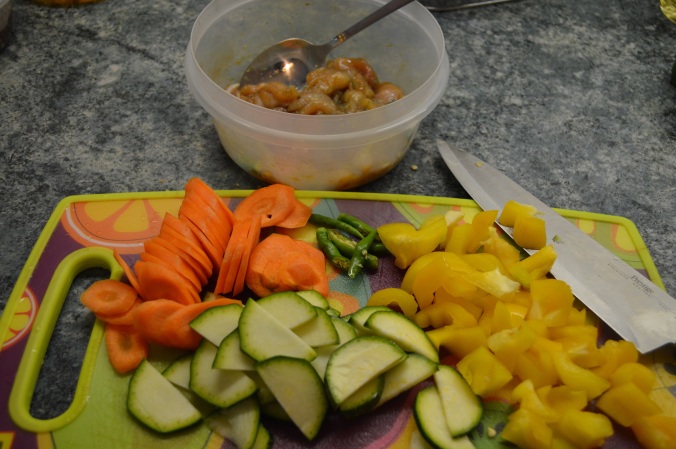 For the marinade:
- 2 tbsp soy sauce
- freshly crushed peppercorns
- 1 chopped green chilli
- salt, for taste
For the marinade:
- 2 tbsp soy sauce
- freshly crushed peppercorns
- 1 chopped green chilli
- salt, for taste
 Method:
1. Marinate the chicken in the above mentioned ingredients. Leave it for 30 minutes.
2. Then, in a wok, heat around three tbsp oil, add ginger garlic paste and wait till it starts to get golden. Add the chicken and fry. Once the chicken is almost done (you can tell by the moisture drying up), add the carrots, followed by the zucchini and bell peppers after an interval of about one minute each.
3. Add 1 1/2 cup of water with half a chicken cube and the sliced green chillies. Remember, you can add as many or as little as you like. It depends on how hot you can handle it!
4. Once it starts to boil, thicken it with corn flour dissolved in six tbsp water. Add it gradually and stir it constantly.
Note: Check the seasoning. Add two tbsp soy sauce for a rich coloured sauce. You can also squeeze half a lemon and add it to the seasoning for a kick!
Meanwhile, roast the peanuts in one tbsp oil till they turn goldenish-brown . Sprinkle the peanuts on top and add some red chilli flakes.
Method:
1. Marinate the chicken in the above mentioned ingredients. Leave it for 30 minutes.
2. Then, in a wok, heat around three tbsp oil, add ginger garlic paste and wait till it starts to get golden. Add the chicken and fry. Once the chicken is almost done (you can tell by the moisture drying up), add the carrots, followed by the zucchini and bell peppers after an interval of about one minute each.
3. Add 1 1/2 cup of water with half a chicken cube and the sliced green chillies. Remember, you can add as many or as little as you like. It depends on how hot you can handle it!
4. Once it starts to boil, thicken it with corn flour dissolved in six tbsp water. Add it gradually and stir it constantly.
Note: Check the seasoning. Add two tbsp soy sauce for a rich coloured sauce. You can also squeeze half a lemon and add it to the seasoning for a kick!
Meanwhile, roast the peanuts in one tbsp oil till they turn goldenish-brown . Sprinkle the peanuts on top and add some red chilli flakes.
 Voila! You are done.
Serve with boiled rice or fried noodles and enjoy!
Happy cooking to all you busy people out there!
PHOTOS: NIDA WAQAR
Follow Nida on Twitter @Nidolicious
Voila! You are done.
Serve with boiled rice or fried noodles and enjoy!
Happy cooking to all you busy people out there!
PHOTOS: NIDA WAQAR
Follow Nida on Twitter @Nidolicious

 Continuing in the same vein of lighter and fun dance tracks, there is, 'Dilliwaali Girlfriend'. This song is the closest to a Punjabi bhangra type of song that you will find on the album. Although, it took some time to grow on me, I love it! And the video definitely had something to do with it!
Continuing in the same vein of lighter and fun dance tracks, there is, 'Dilliwaali Girlfriend'. This song is the closest to a Punjabi bhangra type of song that you will find on the album. Although, it took some time to grow on me, I love it! And the video definitely had something to do with it!
 Balam Pichkari is the catchiest song on the album. This sing-along takes you back to Rang Barse. Watch out, there is no way you will be able to resist this one! That said, Vishal Dadlani proves his versatility once again and female artiste Shalmali Kholgade matches him note for note!
Balam Pichkari is the catchiest song on the album. This sing-along takes you back to Rang Barse. Watch out, there is no way you will be able to resist this one! That said, Vishal Dadlani proves his versatility once again and female artiste Shalmali Kholgade matches him note for note!
 Ghahgra marks the return of 'Mohini' aka
Ghahgra marks the return of 'Mohini' aka  This flows into 'Kabira' a more emotional track that is sure to impress. Rekha Bhardwaj's powerful vocals bring out the nuances of Amitabh Bhatacharya’s lyrics that tell the story of heartbreak. What is even more impressive is the second version of the song, sung by Arijit Singh, who has now made a mark for himself with the versatility of his work.
This is followed by two versions of 'Ilahi' – an original and reprise. The reprise has been rendered by Mohit Chauhan, who garnered critical acclaim for being the voice of Ranbir Kapoor in
This flows into 'Kabira' a more emotional track that is sure to impress. Rekha Bhardwaj's powerful vocals bring out the nuances of Amitabh Bhatacharya’s lyrics that tell the story of heartbreak. What is even more impressive is the second version of the song, sung by Arijit Singh, who has now made a mark for himself with the versatility of his work.
This is followed by two versions of 'Ilahi' – an original and reprise. The reprise has been rendered by Mohit Chauhan, who garnered critical acclaim for being the voice of Ranbir Kapoor in 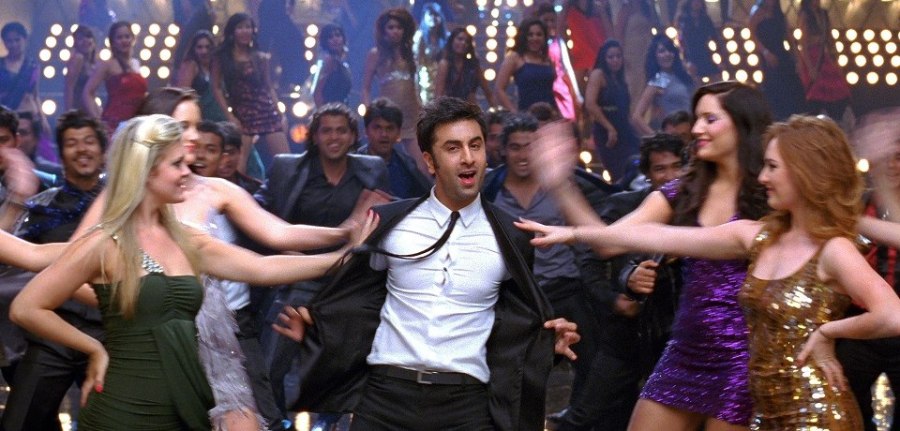 The album ends on a melodiously beautiful note with 'Subhan Allah'. This is without a doubt one of the best romantic tunes to have come out of Bollywood recently with its soulful proclamation of the beloved.
Pritam, who has of late mostly redeemed himself from his earlier criticism of producing 'influenced' work proved his mettle by delivering two blockbuster soundtracks for '
The album ends on a melodiously beautiful note with 'Subhan Allah'. This is without a doubt one of the best romantic tunes to have come out of Bollywood recently with its soulful proclamation of the beloved.
Pritam, who has of late mostly redeemed himself from his earlier criticism of producing 'influenced' work proved his mettle by delivering two blockbuster soundtracks for '

 [/caption]
Karachi’s summer weather is deliciously fickle, a courtesan whose coquetry and harsh indifference distracts one to distraction but come sundown she opens her charm first with a zephyr of cool sea breeze and then the loving embrace of the night’s quietude.
Sultry days give way to ochre, silky dusks which melt into indigo nights and the moon never looks as kindly as it does then.
Summers in those bygone days
[/caption]
Karachi’s summer weather is deliciously fickle, a courtesan whose coquetry and harsh indifference distracts one to distraction but come sundown she opens her charm first with a zephyr of cool sea breeze and then the loving embrace of the night’s quietude.
Sultry days give way to ochre, silky dusks which melt into indigo nights and the moon never looks as kindly as it does then.
Summers in those bygone days  [/caption]
Mangoes were a recurring refrain but no less exciting were the summer sports. The dive in the icy pool marked the beginning of vacations and no week would be complete without a pool foray. Nights would be put to good use with cricket. I played out several Imran Khan exploits in my head only to discover a woeful lack of talent.
[caption id="" align="alignnone" width="540" caption="Photo: Reuters"]
[/caption]
Mangoes were a recurring refrain but no less exciting were the summer sports. The dive in the icy pool marked the beginning of vacations and no week would be complete without a pool foray. Nights would be put to good use with cricket. I played out several Imran Khan exploits in my head only to discover a woeful lack of talent.
[caption id="" align="alignnone" width="540" caption="Photo: Reuters"] [/caption]
Nonetheless, the dawn
[/caption]
Nonetheless, the dawn 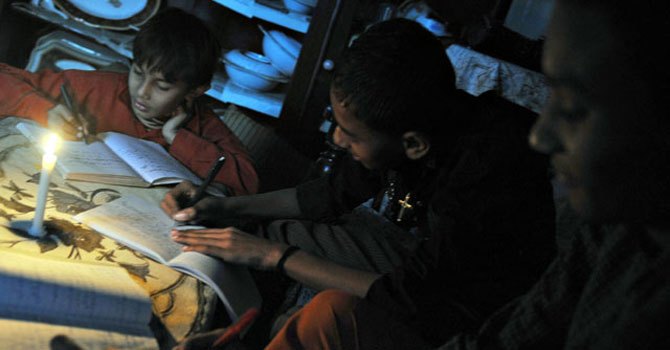 [/caption]
The doggone days would pile up, the heat would increase and just when you thought that Dante’s inferno is coming to life, the heavens would open and down out everything in a deluge of warm summer rain. The lashing monsoon would wash away the physical and mental grime, leaving souls weightless and lead to splashing in puddles, water games and much revelry.
[caption id="" align="alignnone" width="540" caption="Photo: AFP"]
[/caption]
The doggone days would pile up, the heat would increase and just when you thought that Dante’s inferno is coming to life, the heavens would open and down out everything in a deluge of warm summer rain. The lashing monsoon would wash away the physical and mental grime, leaving souls weightless and lead to splashing in puddles, water games and much revelry.
[caption id="" align="alignnone" width="540" caption="Photo: AFP"] [/caption]
The event to mark it all would be the annual
[/caption]
The event to mark it all would be the annual [/caption]
Come August you could hear a dirge - the millions of children lamenting summer’s end.
School shopping would start and we would start the academic year finding solace in the knowledge that it may seem like an eternity, but we will eventually be welcoming another
[/caption]
Come August you could hear a dirge - the millions of children lamenting summer’s end.
School shopping would start and we would start the academic year finding solace in the knowledge that it may seem like an eternity, but we will eventually be welcoming another 

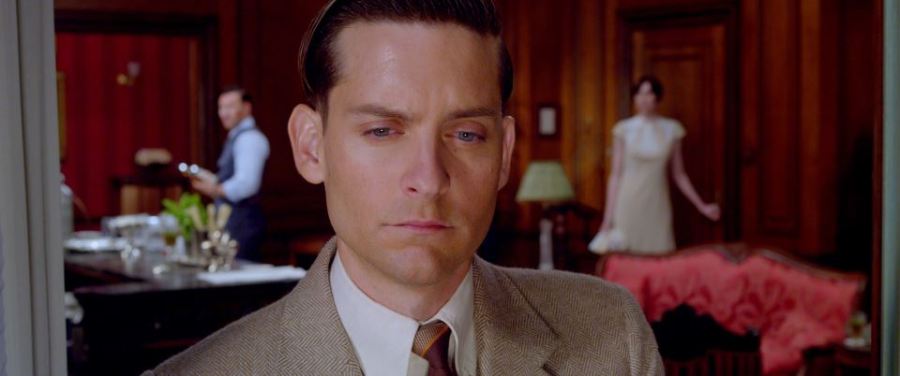 We witness Luhrmann’s interpretation of the wild, roaring, notorious, materialistic and wealthy American life of the 1920s filled with glitz, glamour, parties, and rambunctious effervescence and grandeur.
The 3D images try to capture the essence of a thriving New York in all its
We witness Luhrmann’s interpretation of the wild, roaring, notorious, materialistic and wealthy American life of the 1920s filled with glitz, glamour, parties, and rambunctious effervescence and grandeur.
The 3D images try to capture the essence of a thriving New York in all its 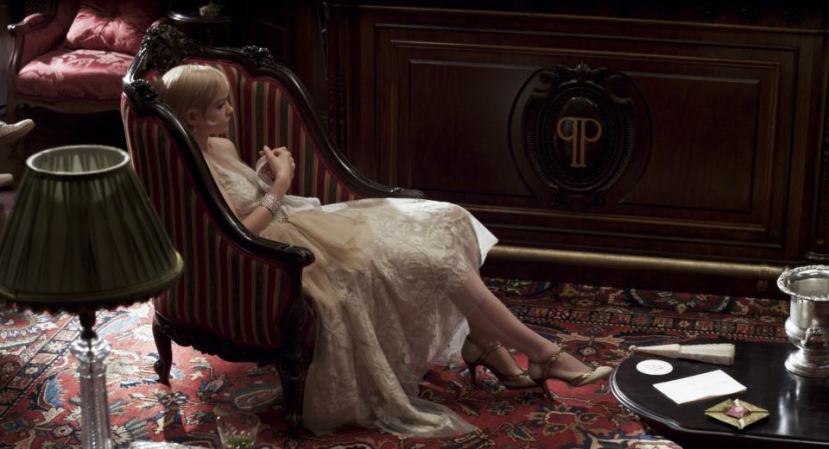 We find out that Nick lives in the fictional village of West Egg, right next door to a mysteriously famous man named Gatsby (Leonardo DiCaprio) who throws extravagantly lavish parties. The movie unfolds with Nick being invited to Gatsby’s grand festival. Later, we come to know that Gatsby has had an affair with Daisy in the past, and is still in love with her.
The entire movie centres around Gatsby’s tragic obsession with Daisy, his undying love for her and his objective in life, which is to marry Daisy.
We find out that Nick lives in the fictional village of West Egg, right next door to a mysteriously famous man named Gatsby (Leonardo DiCaprio) who throws extravagantly lavish parties. The movie unfolds with Nick being invited to Gatsby’s grand festival. Later, we come to know that Gatsby has had an affair with Daisy in the past, and is still in love with her.
The entire movie centres around Gatsby’s tragic obsession with Daisy, his undying love for her and his objective in life, which is to marry Daisy.
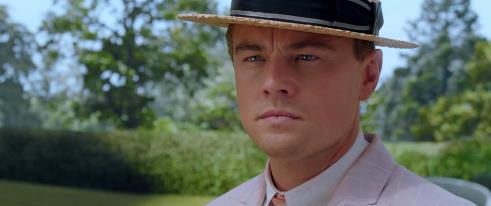 He wants to devote his life to Daisy’s happiness by showering her with his opulent wealth. Throughout the movie, one gets a sense of the decadence and discontent seeping into the rich American lifestyle, as the characters are dissatisfied with their spouses and having affairs on the sidelines.
He wants to devote his life to Daisy’s happiness by showering her with his opulent wealth. Throughout the movie, one gets a sense of the decadence and discontent seeping into the rich American lifestyle, as the characters are dissatisfied with their spouses and having affairs on the sidelines.
 The pursuit of the American dream seems to be the central theme in the movie, and one can guess that this is something that is entirely an illusion as the central characters are absolutely miserable with their haughty, extravagant lifestyles filled with hollowness, loneliness and debauchery.
So after 143 minutes of enduring an overly exaggerated extravaganza that resembled a complex mix of a zombie movie gone astray, mixed with an attempt to display a colourful 3D imitation of Alice in Wonderland , and Anna Karenina, what’s my verdict?
The pursuit of the American dream seems to be the central theme in the movie, and one can guess that this is something that is entirely an illusion as the central characters are absolutely miserable with their haughty, extravagant lifestyles filled with hollowness, loneliness and debauchery.
So after 143 minutes of enduring an overly exaggerated extravaganza that resembled a complex mix of a zombie movie gone astray, mixed with an attempt to display a colourful 3D imitation of Alice in Wonderland , and Anna Karenina, what’s my verdict?
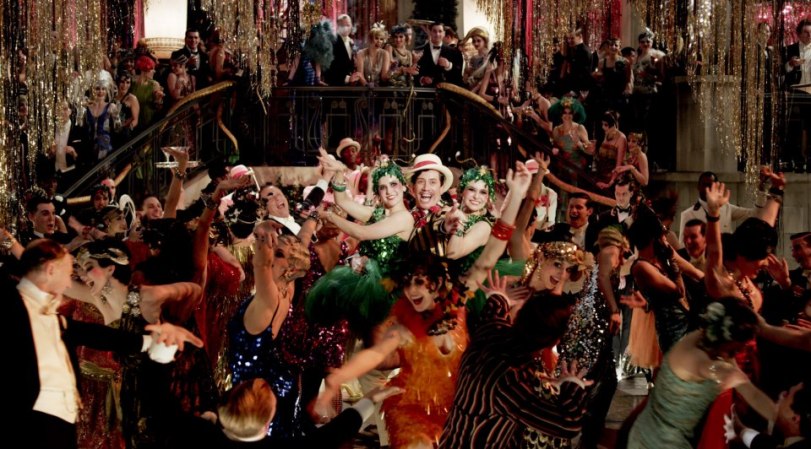 Luhrmann is best suited towards producing musicals, and The Great Gatsby may have been better off as a
Luhrmann is best suited towards producing musicals, and The Great Gatsby may have been better off as a 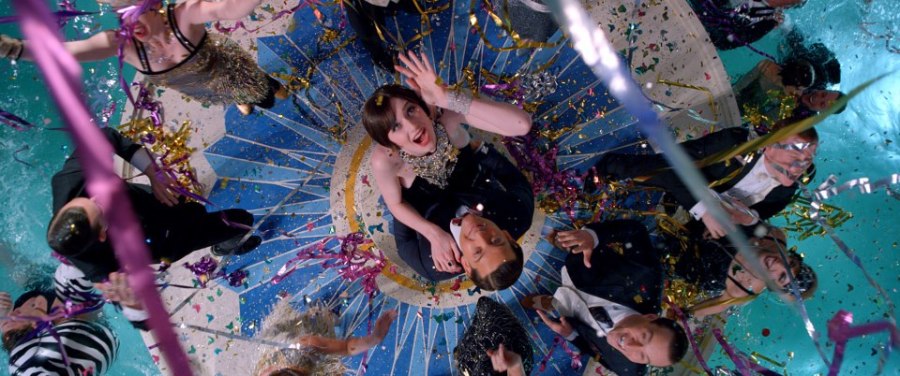 Moreover, his extravagant display of the luxurious, wild, and excessive splendour of Gatsby’s parties was his way of depicting how hollow the pursuit of wealth actually is, and somehow, the disillusionment of the characters became more and more obvious through the riotous, ritzy and exuberant wasteland known as 1920s New York.
Moreover, his extravagant display of the luxurious, wild, and excessive splendour of Gatsby’s parties was his way of depicting how hollow the pursuit of wealth actually is, and somehow, the disillusionment of the characters became more and more obvious through the riotous, ritzy and exuberant wasteland known as 1920s New York.
 Leonardo DiCaprio is absolutely charismatic as the Great Gatsby, filled with an obsessive passion for the girl he loves. He brings the character of Gatsby to life beautifully, but we have already seen DiCaprio play the tragic lover boy who would easily die for the girl he
Leonardo DiCaprio is absolutely charismatic as the Great Gatsby, filled with an obsessive passion for the girl he loves. He brings the character of Gatsby to life beautifully, but we have already seen DiCaprio play the tragic lover boy who would easily die for the girl he The
The 
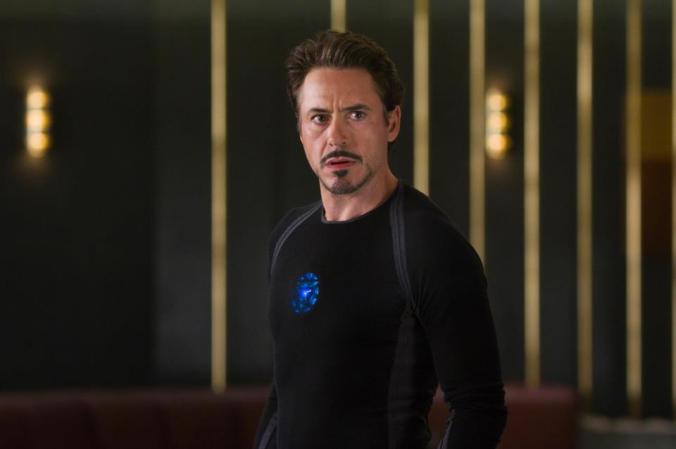 This movie asks us who Tony Stark is without the Iron Man armor. Stark is struggling with his own humanity, considering that his Avengers team is led by a super-soldier, a thunder god, and a giant god-busting green monster. To satisfy his anxiety driven need to be less vulnerable, Stark grows obsessed with his suits, a fact that doesn’t sit well with his girlfriend, Pepper Potts (Gwyneth Paltrow).
This movie asks us who Tony Stark is without the Iron Man armor. Stark is struggling with his own humanity, considering that his Avengers team is led by a super-soldier, a thunder god, and a giant god-busting green monster. To satisfy his anxiety driven need to be less vulnerable, Stark grows obsessed with his suits, a fact that doesn’t sit well with his girlfriend, Pepper Potts (Gwyneth Paltrow).
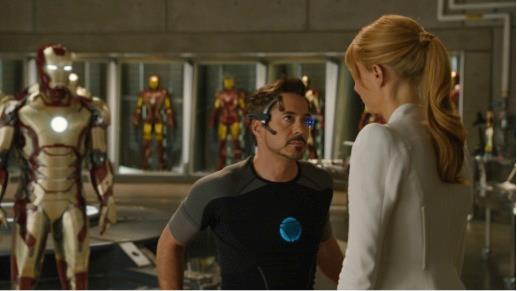 Stark’s attention is diverted after the super villain Mandarin (Ben Kingsley/ Guy Pearce) begins launching terror attacks against American targets and issuing propaganda videos. In response, Stark issues a challenge, even providing the details of his home address. At this point we observe the methodical manner of the entire Mandarin terror campaign, with Mandarin’s public persona hitting all the right boxes in the DIY terrorist leader checklist; a possible commentary by Shane Black on the ‘war on terror’.
Here, in an explosive action sequence, Mandarin’s helicopter gunships completely annihilate Tony Stark’s residence, endangering Pepper Potts, and forcing Stark to make an inadvertent escape to a faraway rural town in Tennessee with a malfunctioning Iron Man suit.
Stark’s attention is diverted after the super villain Mandarin (Ben Kingsley/ Guy Pearce) begins launching terror attacks against American targets and issuing propaganda videos. In response, Stark issues a challenge, even providing the details of his home address. At this point we observe the methodical manner of the entire Mandarin terror campaign, with Mandarin’s public persona hitting all the right boxes in the DIY terrorist leader checklist; a possible commentary by Shane Black on the ‘war on terror’.
Here, in an explosive action sequence, Mandarin’s helicopter gunships completely annihilate Tony Stark’s residence, endangering Pepper Potts, and forcing Stark to make an inadvertent escape to a faraway rural town in Tennessee with a malfunctioning Iron Man suit.
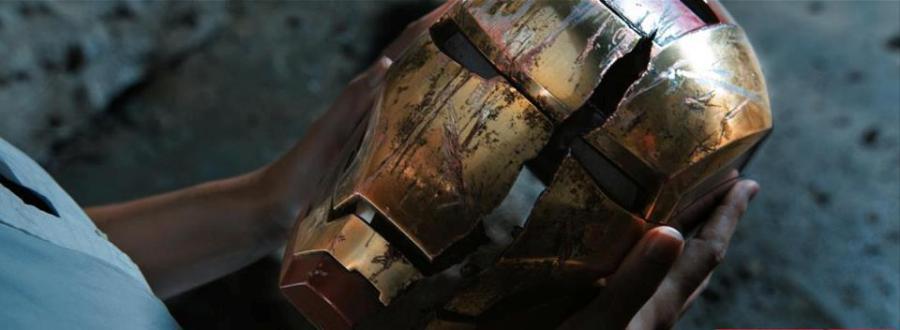 Soon the cracks in the armor begin to match the cracks in the man, with Stark unable to shake his anxiety problems. Here, both cracks are given aid by Harley (Ty Simpkins), a technically savvy ten year old boy who exchanges some extremely amusing one-liners with Tony Stark. In typical Shane Black style, the bonding between the two takes place through some amusingly transparent attempts by Harley into emotionally manipulating his favorite superhero.
Eventually Stark begins solving the mystery of Extremis, a powerful experimental treatment used by Mandarin’s forces, which make its users volatile both mentally and physically, granting them some fiery abilities.
Soon the cracks in the armor begin to match the cracks in the man, with Stark unable to shake his anxiety problems. Here, both cracks are given aid by Harley (Ty Simpkins), a technically savvy ten year old boy who exchanges some extremely amusing one-liners with Tony Stark. In typical Shane Black style, the bonding between the two takes place through some amusingly transparent attempts by Harley into emotionally manipulating his favorite superhero.
Eventually Stark begins solving the mystery of Extremis, a powerful experimental treatment used by Mandarin’s forces, which make its users volatile both mentally and physically, granting them some fiery abilities.
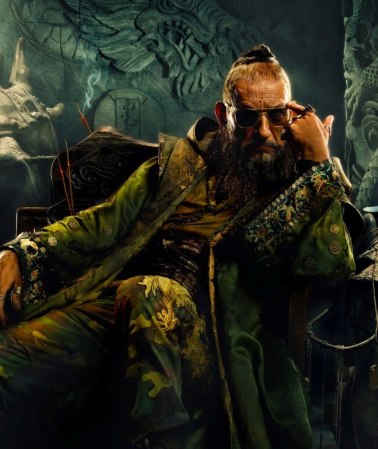






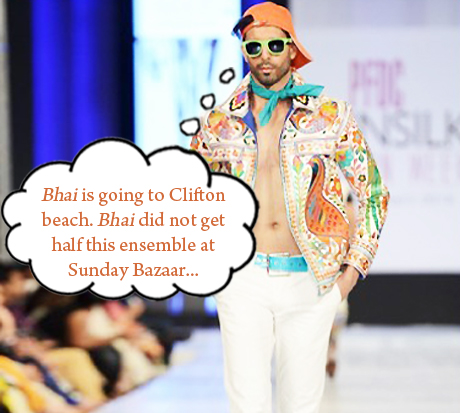
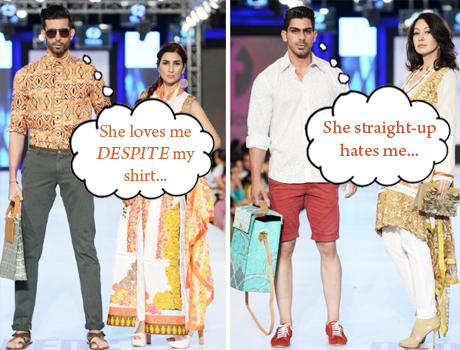



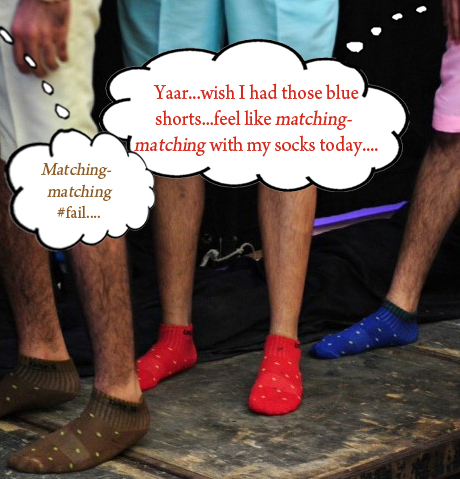
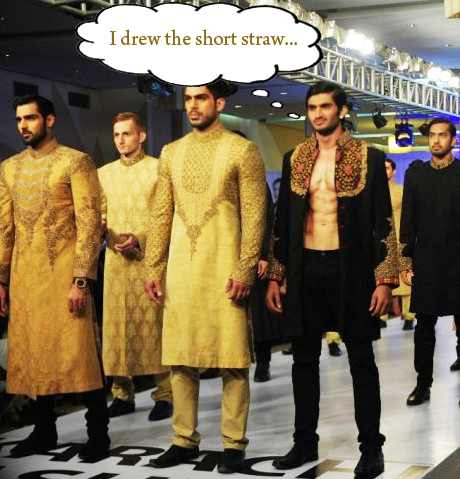

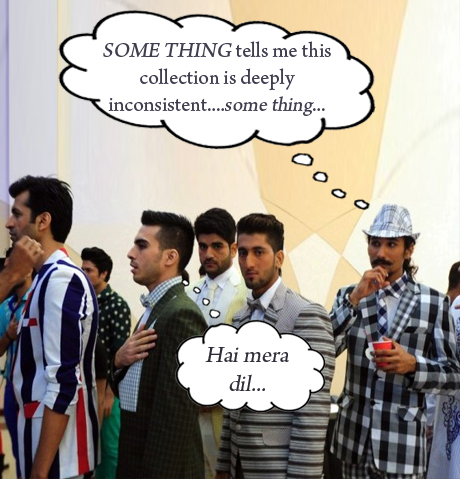 Read more by Nadya
Read more by Nadya 

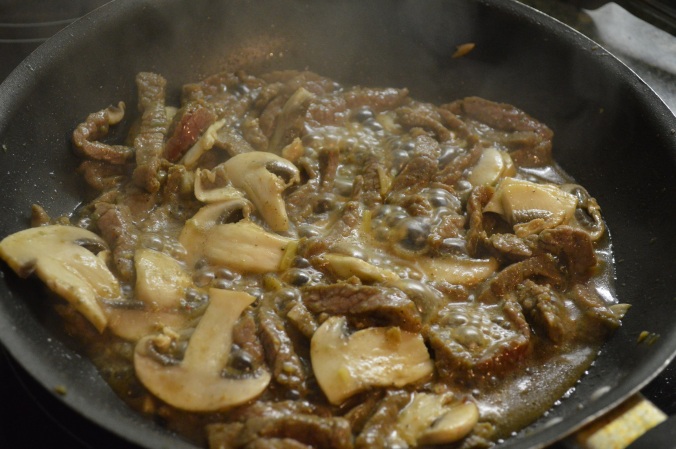 [/caption]
In a bowl, heat up two tablespoons of water and dissolve the sugar in it. Add the rest of the ingredients for the dressing and whisk briefly.
Add all the ingredients of the
[/caption]
In a bowl, heat up two tablespoons of water and dissolve the sugar in it. Add the rest of the ingredients for the dressing and whisk briefly.
Add all the ingredients of the  On reaching our destination, I was the first one to go. I was excited and nervous all at the same time. I started tying up all the relevant belts and as soon as I got the go-signal, I stepped forward. My heart was in my throat at this point and I was scared to death but I kept running. Holding on to my belt tight, the guides were holding my arms and once they let go I was in the air!
On reaching our destination, I was the first one to go. I was excited and nervous all at the same time. I started tying up all the relevant belts and as soon as I got the go-signal, I stepped forward. My heart was in my throat at this point and I was scared to death but I kept running. Holding on to my belt tight, the guides were holding my arms and once they let go I was in the air!
 I held on to the handles tight and followed all the directions that were communicated via the walky-talky attached to my safety bag on my back.
The 1.5 minute flight made my day!
I held on to the handles tight and followed all the directions that were communicated via the walky-talky attached to my safety bag on my back.
The 1.5 minute flight made my day!
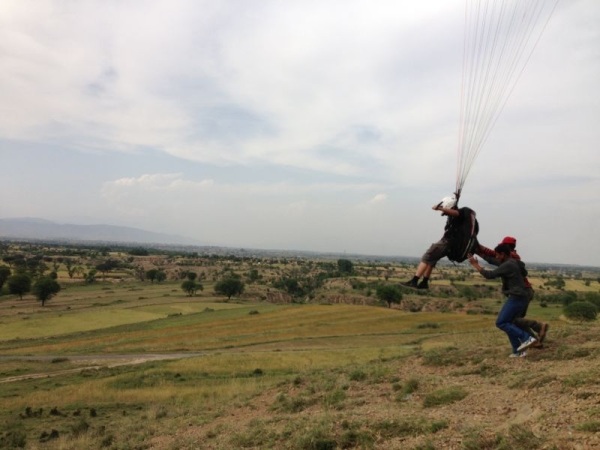 I was so enthralled by the whole experience that I decided to go all out and I went a second time as well!
I was so enthralled by the whole experience that I decided to go all out and I went a second time as well!
 Though, it was not an easy job to
Though, it was not an easy job to 

 Tofu Salad[/caption]
After what I had already been served, I was really looking forward to trying the main course, i.e. the ‘Ohn No Khauk Suey’. A variation of this dish has been passed on in my family from generation to generation and is, hands down, one of my all-time favourite dishes. Needless to say, I consider myself a bit of a Khauk Suey connoisseur and this was the perfect dish I could pass my judgment on.
[caption id="" align="alignnone" width="500"]
Tofu Salad[/caption]
After what I had already been served, I was really looking forward to trying the main course, i.e. the ‘Ohn No Khauk Suey’. A variation of this dish has been passed on in my family from generation to generation and is, hands down, one of my all-time favourite dishes. Needless to say, I consider myself a bit of a Khauk Suey connoisseur and this was the perfect dish I could pass my judgment on.
[caption id="" align="alignnone" width="500"] Ohn No Khauk Suey[/caption]
Khauk Suey can be a bit intimidating for someone trying it out for the first time, as there are a lot of ingredients that you need to combine to get an ideal platter to suit your taste-buds. I started off with a generous amount of egg noodles and coconut-chicken curry, and garnished it with some coriander, some boiled egg, some wheat crisps, chilli flakes, chilli sauce, fish sauce and soy sauce. It took me a good two minutes to prepare the plate and after carefully re-evaluating my decisions, I dug in.
[caption id="" align="alignnone" width="500"]
Ohn No Khauk Suey[/caption]
Khauk Suey can be a bit intimidating for someone trying it out for the first time, as there are a lot of ingredients that you need to combine to get an ideal platter to suit your taste-buds. I started off with a generous amount of egg noodles and coconut-chicken curry, and garnished it with some coriander, some boiled egg, some wheat crisps, chilli flakes, chilli sauce, fish sauce and soy sauce. It took me a good two minutes to prepare the plate and after carefully re-evaluating my decisions, I dug in.
[caption id="" align="alignnone" width="500"] The Final Khauk Suey Platter[/caption]
The first bite transported me back to my grandmother’s kitchen. Everything sung in perfect unison and the effect it had on me cannot be put into words. Needless to say, I enjoyed every single crunchy bite of the dish and even though my stomach was full, my heart yearned for more. I couldn’t help but give this dish a 10/10.
The pricing
A typical Khauk Suey serving with a Papaya salad on the side costs around Rs570, which is comparatively lower than what you’d be
The Final Khauk Suey Platter[/caption]
The first bite transported me back to my grandmother’s kitchen. Everything sung in perfect unison and the effect it had on me cannot be put into words. Needless to say, I enjoyed every single crunchy bite of the dish and even though my stomach was full, my heart yearned for more. I couldn’t help but give this dish a 10/10.
The pricing
A typical Khauk Suey serving with a Papaya salad on the side costs around Rs570, which is comparatively lower than what you’d be 
 Mrigdeep Singh Lamba’s Fukrey has mirrored the style established by Raju Hirani. There are multiple moments in the film where you have not fully recovered from your laughter when a new development in the story leaves your mind reeling with emotion. Having said that, like the predecessors of this method, Fukrey is primarily a comedy film, something like Delhi Belly with a Punjabi touch.
Mrigdeep Singh Lamba’s Fukrey has mirrored the style established by Raju Hirani. There are multiple moments in the film where you have not fully recovered from your laughter when a new development in the story leaves your mind reeling with emotion. Having said that, like the predecessors of this method, Fukrey is primarily a comedy film, something like Delhi Belly with a Punjabi touch.
 While the film follows the tried and tested mix of several directors, Fukrey neither bores the audience, nor does it seem repetitive.
The charm of Fukrey is boosted by its committed cast. The characters are detailed and fun. 'Bholi Punjaban', for example, carries a dappled personality: she is narcissistic and foul-mouthed with a 'Sindrella' tattoo on her neck. Meanwhile, the college watchman 'Pandit' - a kind, soft spoken yet corrupt guy, leaks exam papers, seeking backdoor registration for unqualified students in exchange for money. Both Richa Chadda and Pankaj Tripathi have handled their roles splendidly. Seeing Richa in a purely comic role after her intense acting in Gangs of Wasseypur was a joy. Similarly, Pankaj Triptahi’s role was a complete contrast to his performance in Gangs of Wasseypur, showing his adaptability as an actor.
While the film follows the tried and tested mix of several directors, Fukrey neither bores the audience, nor does it seem repetitive.
The charm of Fukrey is boosted by its committed cast. The characters are detailed and fun. 'Bholi Punjaban', for example, carries a dappled personality: she is narcissistic and foul-mouthed with a 'Sindrella' tattoo on her neck. Meanwhile, the college watchman 'Pandit' - a kind, soft spoken yet corrupt guy, leaks exam papers, seeking backdoor registration for unqualified students in exchange for money. Both Richa Chadda and Pankaj Tripathi have handled their roles splendidly. Seeing Richa in a purely comic role after her intense acting in Gangs of Wasseypur was a joy. Similarly, Pankaj Triptahi’s role was a complete contrast to his performance in Gangs of Wasseypur, showing his adaptability as an actor.
 The four protagonists of the film are also well-selected. While Ali Fazal as 'Zafar' is relatively unimpressive, the other three leads are hilarious. Pulkit Samrat, being the smart wizard, reminds you of 'Amar' from Andaz Apna Apna or 'Raju' of Hera Pheri - good at heart but willing to make easy money through shady means. Pulkit’s comic timing is spectacular and his chemistry with 'Choocha' is excellent. 'Choocha' on the other hand is a cross between 'Zach Galfianikis' of Hangover and 'Babu Bhaiyya' of Hera Pheri. He is spectacular when it comes to dreaming the lottery results but a certified idiot in all other respects. Still, he surprises you when it comes to his survival instincts. His scenes with Richa Chadda are utterly hilarious. Manjot Singh is also enjoyable in his role as 'Sardar Ji'. He portrays a nice guy who does not want to charge people who eat at his father’s shop yet wishes for admission into a college without having to study for it. He swears that he will teach a lesson to his cheating girlfriend but ends up waving and smiling at her.
The four protagonists of the film are also well-selected. While Ali Fazal as 'Zafar' is relatively unimpressive, the other three leads are hilarious. Pulkit Samrat, being the smart wizard, reminds you of 'Amar' from Andaz Apna Apna or 'Raju' of Hera Pheri - good at heart but willing to make easy money through shady means. Pulkit’s comic timing is spectacular and his chemistry with 'Choocha' is excellent. 'Choocha' on the other hand is a cross between 'Zach Galfianikis' of Hangover and 'Babu Bhaiyya' of Hera Pheri. He is spectacular when it comes to dreaming the lottery results but a certified idiot in all other respects. Still, he surprises you when it comes to his survival instincts. His scenes with Richa Chadda are utterly hilarious. Manjot Singh is also enjoyable in his role as 'Sardar Ji'. He portrays a nice guy who does not want to charge people who eat at his father’s shop yet wishes for admission into a college without having to study for it. He swears that he will teach a lesson to his cheating girlfriend but ends up waving and smiling at her.
 In the first fifteen minutes of the film, I thought that Fukrey will offer several smiles but fall short of making me laugh. I spent the next hour and a half laughing uncontrollably at the characters' antics. I highly recommended watching Fukrey!
Read more by Sami
In the first fifteen minutes of the film, I thought that Fukrey will offer several smiles but fall short of making me laugh. I spent the next hour and a half laughing uncontrollably at the characters' antics. I highly recommended watching Fukrey!
Read more by Sami 

 Method:
To make Greek yoghurt, lay a piece of cheese cloth or muslin in a bowl.
Add yoghurt and let it drain by keeping it in a large sieve. You can also try gathering up the edges of the cloth and knotting them over an upper cabinet handle so that the yoghurt hangs over a bowl to drain. Drain the yoghurt for about two hours.
Method:
To make Greek yoghurt, lay a piece of cheese cloth or muslin in a bowl.
Add yoghurt and let it drain by keeping it in a large sieve. You can also try gathering up the edges of the cloth and knotting them over an upper cabinet handle so that the yoghurt hangs over a bowl to drain. Drain the yoghurt for about two hours.

 While the yoghurt is draining, you can make the crust. To do so, crush the digestive biscuits and add butter and brown sugar to them.
While the yoghurt is draining, you can make the crust. To do so, crush the digestive biscuits and add butter and brown sugar to them.
 Put the mixture in a 9-inch springform pan and blend it well with your fingers. Press it on all sides of the pan to form the crust base. Now keep it in a preheated oven (180° C) for eight minutes.
Put the mixture in a 9-inch springform pan and blend it well with your fingers. Press it on all sides of the pan to form the crust base. Now keep it in a preheated oven (180° C) for eight minutes.
 Once it is nice and brown, take it out and keep it in the fridge to cool.
To make the filling, combine the strained yoghurt, eggs, sugar and
Once it is nice and brown, take it out and keep it in the fridge to cool.
To make the filling, combine the strained yoghurt, eggs, sugar and 
 Now pour the mixture into the prepared crust and bake at 180° C in the oven for 35-40 minutes. After 35 minutes, check the
Now pour the mixture into the prepared crust and bake at 180° C in the oven for 35-40 minutes. After 35 minutes, check the  Take the cake out of the oven and let it cool in the fridge for at least four hours, or overnight if possible.
Once it’s completely cooled, release the springform and take the cake out in a serving dish.
Take the cake out of the oven and let it cool in the fridge for at least four hours, or overnight if possible.
Once it’s completely cooled, release the springform and take the cake out in a serving dish.
 Pour some slightly heated blueberry/strawberry jam over the cake or decorate it with fresh fruits before serving.
I assure you the results will be very pleasing to your flavour-loving taste buds. Better still, you will not be feeding your weight-watching body a ton of unhealthy calories! Best of luck recreating this recipe.
PHOTOS: SAMEEA ZAFAR
This post originally appeared
Pour some slightly heated blueberry/strawberry jam over the cake or decorate it with fresh fruits before serving.
I assure you the results will be very pleasing to your flavour-loving taste buds. Better still, you will not be feeding your weight-watching body a ton of unhealthy calories! Best of luck recreating this recipe.
PHOTOS: SAMEEA ZAFAR
This post originally appeared 
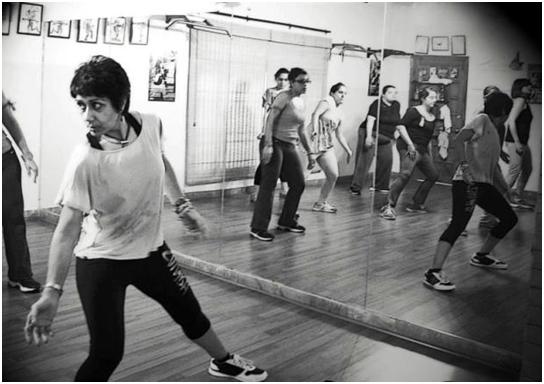 What is Zumba?
What is Zumba?
 How does it help?
How does it help?
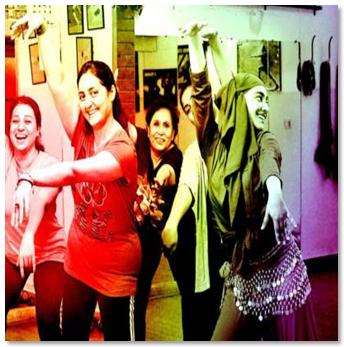 How do you do it?
How do you do it?
 How long does it take to see results?
How long does it take to see results?

 Marshall tells the Wolfpack a story they can barely believe. It seems that Leslie Chow (Ken Jeong) escaped from a maximum security prison in Bangkok and stole Marshall’s gold worth $21 million.
The four friends are unaware of Chow’s whereabouts - except for Alan, who has been exchanging letters with Chow for months. The Wolfpack have no clue about Alan’s friendship with Chow. Marshall makes a deal with the Wolfpack - he will release Doug once the Wolfpack finds Chow and recovers the stolen gold.
The movie has the element of surprise as none of the main characters literally experience a hangover unlike the previous two installments, otherwise it might have turned out to be a monotonous affair.
The movie’s linear plot, with all of its main characters working non-stop to reach one main goal, is similar to its previous two parts - the reason why this franchise has performed so well.
Marshall tells the Wolfpack a story they can barely believe. It seems that Leslie Chow (Ken Jeong) escaped from a maximum security prison in Bangkok and stole Marshall’s gold worth $21 million.
The four friends are unaware of Chow’s whereabouts - except for Alan, who has been exchanging letters with Chow for months. The Wolfpack have no clue about Alan’s friendship with Chow. Marshall makes a deal with the Wolfpack - he will release Doug once the Wolfpack finds Chow and recovers the stolen gold.
The movie has the element of surprise as none of the main characters literally experience a hangover unlike the previous two installments, otherwise it might have turned out to be a monotonous affair.
The movie’s linear plot, with all of its main characters working non-stop to reach one main goal, is similar to its previous two parts - the reason why this franchise has performed so well.
 What is amazing about Hangover 3 is the fact that the plot, not even for a second, deviates from the Wolfpack’s mission. The credit goes to the director and the producer who used the same approach with Hangover 1 and 2.
The movie, however, has its
What is amazing about Hangover 3 is the fact that the plot, not even for a second, deviates from the Wolfpack’s mission. The credit goes to the director and the producer who used the same approach with Hangover 1 and 2.
The movie, however, has its  Whereas the movie follows a concrete plot, it seems at points as if the Wolfpack has lost some of its chemistry - chemistry that had remained intact up till the last installment. The Wolfpack’s strength is their ability to work as a cohesive team. Unfortunately, that was not the case in this particular movie.
Moreover, Jade (Heather Graham), who got married to Stu in the first part, only made a cameo appearance, turning Hangover 3 into an all-men affair.
Whereas the movie follows a concrete plot, it seems at points as if the Wolfpack has lost some of its chemistry - chemistry that had remained intact up till the last installment. The Wolfpack’s strength is their ability to work as a cohesive team. Unfortunately, that was not the case in this particular movie.
Moreover, Jade (Heather Graham), who got married to Stu in the first part, only made a cameo appearance, turning Hangover 3 into an all-men affair.
 The movie ends with Alan turning over a new leaf and getting married, which indicates that the franchise may actually have ended. Had the director been working on a fourth installment, Alan would have retained his childish state. However, the end credits show otherwise.
Whatever the case is, I hope that the director and producer don’t make their decision in haste. If there is a fourth part of Hangover on its way, it should have a crisp story and witty dialogues – the elements that made Hangover part 1 a
The movie ends with Alan turning over a new leaf and getting married, which indicates that the franchise may actually have ended. Had the director been working on a fourth installment, Alan would have retained his childish state. However, the end credits show otherwise.
Whatever the case is, I hope that the director and producer don’t make their decision in haste. If there is a fourth part of Hangover on its way, it should have a crisp story and witty dialogues – the elements that made Hangover part 1 a 








